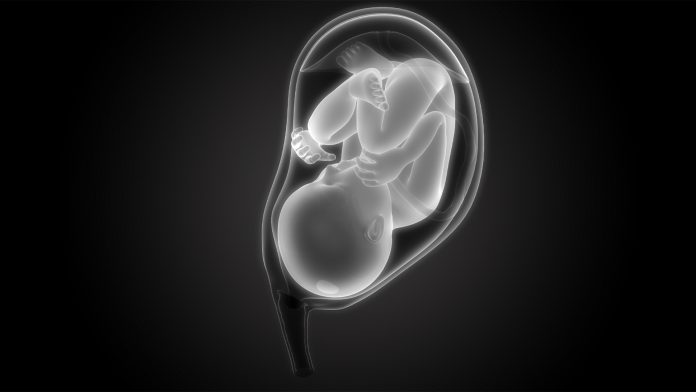
New evidence that foetal membranes have the ability to heal themselves following injury could help to reduce the risk of birth complications.
Led by Queen Mary University of London and University College London (UCL), the research has demonstrated that foetal membranes can repair themselves following damage. The scientists say that this new understanding could help to inform treatments to prevent preterm birth.
The findings have been published in Scientific Reports.
Foetal membranes that surround the baby in the womb during pregnancy are integral to ensuring normal development. However, these membranes can be damaged by such factors as infection, bleeding, foetal surgery, or by diagnostic tests during pregnancy that involve the piercing of the foetal membrane sac.
Currently, there are no clinical approaches available to repair or improve healing in foetal membranes. Until now, it was unclear if small holes in the membranes were able to heal themselves.
Replicating damage caused in foetal surgery
To investigate this, the research team – which also includes scientists and clinicians from Nanyang Technological University, Singapore, and University Hospitals Leuven, Belgium – used a needle to create small defects in donated human foetal membrane tissue, to mimic damage caused during foetal surgery.
Wound-repairing cells
Several days following injury, the researchers discovered the presence of a population of cells called myofibroblasts (MFs), which play an important role in wound healing, and found that these cells crawled towards the edges of the wound and into the defect site. This cell population produced collagen and started to pull the edges of the wound, contracting the tissues together and repairing the wound.
These findings add to the team’s previous work that highlighted the importance of a protein called Connexin 43 (Cx43) in the process of wound healing and repair. Whilst in this study the researchers showed that Cx43 was expressed by two cell populations, amniotic mesenchymal cells (AMCs) and MFs, the localisation and levels of Cx43 measured were different. They also found that overexpression of this protein affected the ability of cells to migrate into the defect site and close the wound.
Dr Tina Chowdhury, Senior Lecturer in Regenerative Medicine at Queen Mary, said: “We have always thought that small diameter wounds created in human foetal membranes rarely heal by themselves, but here we show that the tissues have the potential to do this. We found that Cx43 has different effects on cell populations found in the membranes and promotes transformation of AMCs into MFs, triggering them to move, repair, and heal defects in the foetal membranes.”
The premature rupture of foetal membranes, known as preterm prelabour rupture of the membranes (PPROM), is a major cause of preterm birth, accounting for around 40% of early infant deaths. Therefore, the successful repair of foetal membranes could help reduce the risk of birth complications.
Anna David, UCLH Consultant and Professor in Obstetrics and Maternal Fetal Medicine and Director at the UCL Elizabeth Garrett Anderson Institute for Women’s Health and a co-author of the study, said: “Finding that the foetal membranes have this potential to heal is a huge step towards developing treatments for women with PPROM. It holds out hope that we may be able to delay or even prevent preterm birth, which will significantly improve baby outcomes.”









